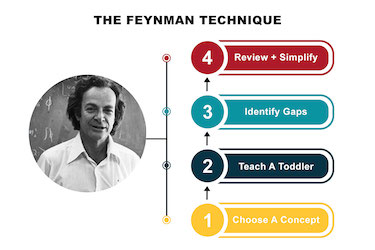The pomodoro learning technique is a time management technique which was created by Francesco Cirillo in the late 1980s. It involves using a timer to cut work down into smaller chunks. Traditionally, 25 minutes of study time followed by a short break. Each break is called a 'pomodoro' the Italian word for 'tomato' after a tomato shaped kitchen timer which Cirillo used as a university student.
The technique has become popular through the use of apps and websites that provide timers and instructions and over 2 million people worldwide have used it. It is closely related with concepts used in software design such as 'timeboxing' and 'iterative development'. It has also been used in 'pair programming' contexts.
The 6 objectives of the pomodoro technique
The pomodoro technique has been separated into 6 objectives which are:
- Find out the amount of time an activity takes to complete – This involves using the pomodoro to-sheet as a visual overview to evaluate the amount of time you have spent on each task.
- Reduce interruptions – By spending 25 minutes at a time on each task, you will learn how to spend your time effectively and handle unavoidable disruptions while staying focused on the task at hand.
- Estimate the effort it might take for each activity – Once you have got used to this technique, you will be able to anticipate accurately, how many Pomodoro's it will take to complete your tasks for tomorrow, the next week and the next month.
- Make the pomodoro more effective – While the foundations of the pomodoro technique is set, what you do with the Pomodoro's can be adjusted in order to increase efficiency. One way to make this technique more sustainable is to review what you have done before the first few minutes.
- Create a timetable – By having a timetable in place it will set a limit and help motivate you to complete a task within a set period of time. It also sets apart your work time from your free time, creating a healthy work-life balance. This will allow you to enjoy your time off without worrying about what you have to do for work.
- Design your own objectives – This technique can be used to create your own objectives. For example, a teacher might realize they are spending too much time on lesson planning, and therefore tweak their timetable to allow time to research ideas.
The core process of the pomodoro technique
We all lead busy lifestyles and feel pressure at work or at university to be productive and meet deadlines on time. The pomodoro technique teaches you to use your time more efficiently instead of struggling with the pressure to be productive 24/7. It is an easy technique to lead which can be life changing. The pomodoro core process consists of 6 easy steps:
- Choose a task you would like to complete – This can be whatever you like whether it is small, big or something you have been procrastinating. The only important thing is giving it your full attention.
- Set the pomodoro for 25 minutes – Allow yourself to focus on the task at hand for 25 minutes with no interruptions.
- Work on the task until the pomodoro goes off – Concentrate on the task for 25 minutes until the timer goes off. If you think of anything else you need to do during this time, write it down on a piece of paper.
- When the pomodoro goes off, add a checkmark on a piece of paper – Congratulate yourself for spending valuable time on a task without any interruptions.
- Take a short break – Do anything that is not work related and take time for yourself, this could be going for a short walk, meditation, or just getting a cup of coffee, anything that is relaxing!
- Every 4 Pomodoro's take a longer break – Once you have completed four pomodoros, take a longer break from up to 20 – 30 minutes. This time will allow your brain to process and retain the information and rest before your next set of pomodoros.
How the pomodoro technique can make learning more effective?
The pomodoro technique has become an extremely popular method for working and studying with over 2 million people now using it. It is broken down into 6 easy steps which can be life changing and provide many benefits. It has been proved to make learning more effective for several reasons:
- More motivation – It can make you more determined to achieve your goals which can enhance your motivation.
- Improves focus and concentration – It involves removing interruptions which can help you to focus better and therefore, allow you to get more done in smaller periods of time, and help improve the quality of your work.
- It increases your energy and productivity because it allows you to take breaks in between which enables your brain to process and retain the information and rest and refresh before starting again.
- Better organisation – it enables you to become more organised as you break your tasks down into smaller and more manageable chunks as you work on something for 25 minutes at a time.
- Meet deadlines without time pressure – It takes the pressure of meeting deadlines by allowing you to break a complex goal down into smaller chunks, so it is easier to complete within the time limit.
This pomodoro learning technique is popular amongst university students and professionals. It has proved to be life changing and helped people to become more productive, motivated, and determined to achieve their goals, as it encourages people to get more done without interruptions during 25-minute time periods. This enables people to become more motivated, increases their focus and concentration, helps them to organise their time more effectively, and promotes a healthy work-life balance.















